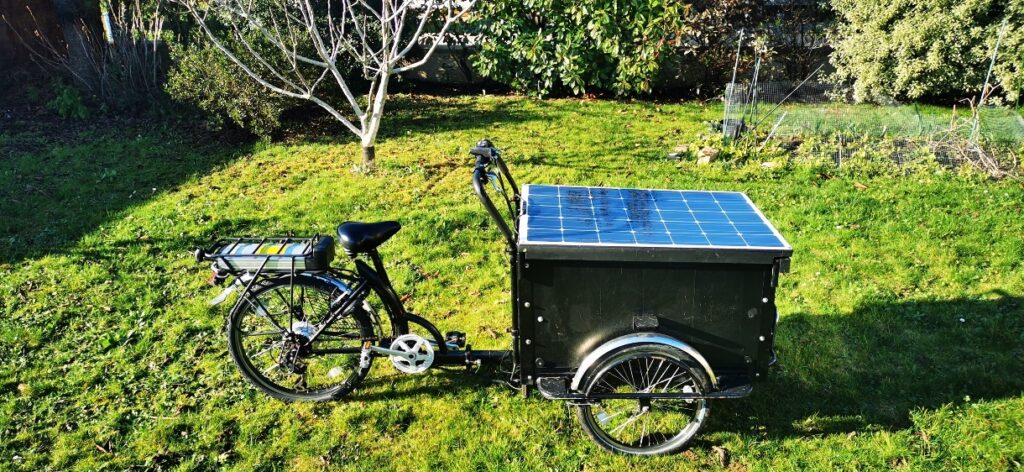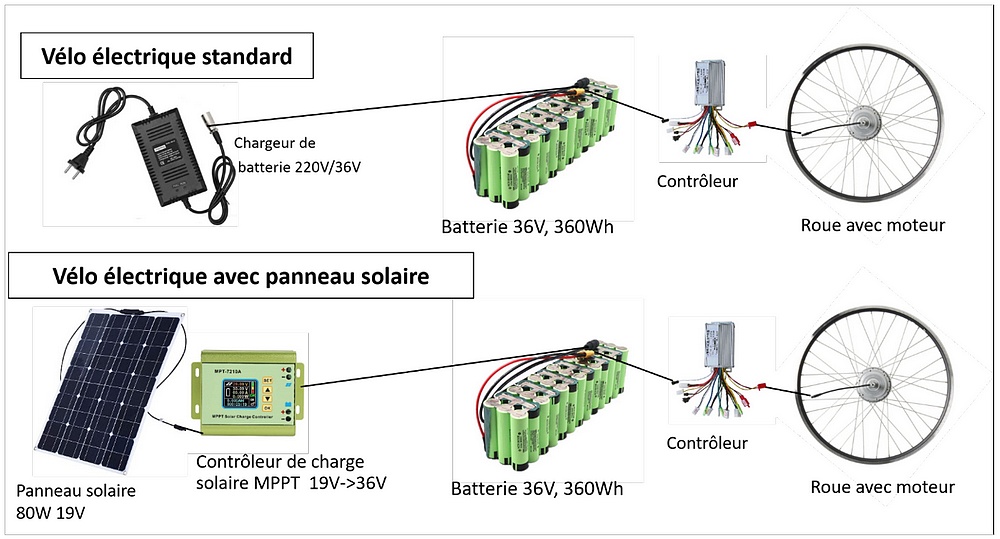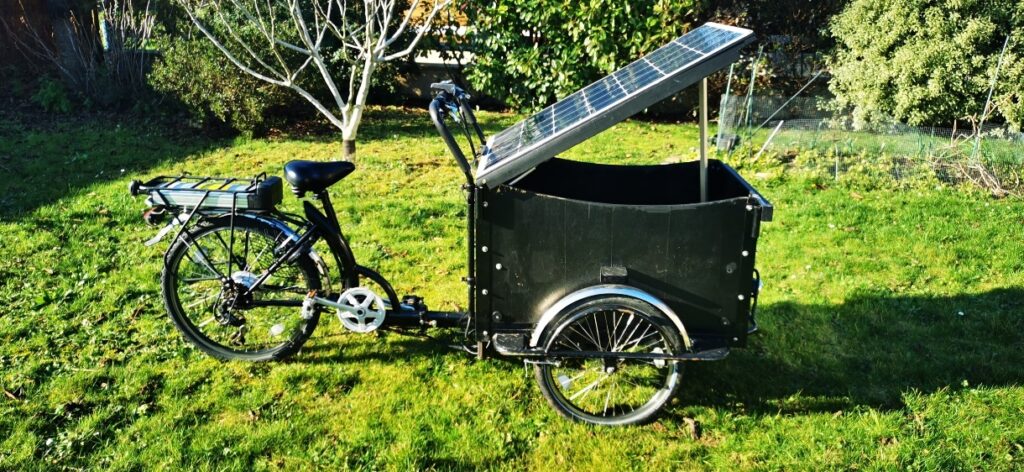
Introduction
Passionate about light mobility and solar energy, I brought these two interests together by building a solar bike with photovoltaic panels. For this first realization, I wanted a system as simple and as cheap as possible. Indeed, I was not sure I would succeed although a few simple calculations showed that it could only work.
I wanted an autonomous vehicle for local travel in my small Norman town of 5000 inhabitants, I did not intend to make a big trip with this vehicle.
Technical description
The bike, the battery, the motorization
The realization dates from April 2021. I didn't change anything about the original scooter and its electric assistance.
- an electric scooter with a trunk that can accommodate a load of 50 kg (second-hand purchase 800 €),
- a 36 Volt – 360 Wh battery on the rear luggage rack,
- a 220 W motor on the rear wheel.
Solar equipment
.I added the following to turn this scooter into a solar vehicle:
- a solar panel of 80 Watts peak (140 €).
Finding a format model corresponding to the size of the trunk was not easy (5X7 cells), - a solar charge controller that regulates to recharge the 36 Volt battery (70 €),
- a door of personal manufacture: wood, hinges, closure, jacks (50 €)
- A small display to control battery charging.

Feedback, assessment
As soon as the scooter is outside, the battery is continuously recharged. We go to the beach, time to picnic, swim and sunbathe and the battery is recharged for the return! This type of bike is very interesting when charging points are rare. And charging the battery while using the bike increases the vehicle's range.
This scooter allows me to ride more than 100 km per week in summer, and up to 30 km per week in winter, which for my needs is enough.
Balance sheet from an economic point of view:
The total cost of the solar installation was 260 €. Since 2021, the bike has not been recharged in the area.
If I had recharged the battery on the 220 V mains, each charge would have cost about €0.10. By recharging 2600 times the battery, largely its lifespan, we would arrive at a total cost of 260 €, the equivalent of the cost of the solar installation.
In other words, for my use, the solar installation is not of significant economic interest compared to a simple electric bike.
From an ecological point of view:
It would be preferable to recharge a removable battery on a fixed solar system that can produce continuously for other uses in the house. But this solution is still more environmentally friendly than using a car.
From a pedagogical point of view:
This project shows that light electric mobility requires few resources. A simple panel with a surface area of 1/2 m² provides enough energy for most trips within a radius of 10 km.
From a practical point of view:
In summer, it takes 3 to 4 hours of sunshine to be able to ride 1 hour with assistance. In winter, it takes 2 days of brightness to ride 1 hour.
Point to note:
A scooter is not a stable vehicle in all situations, you have to be very careful when cornering. Indeed, unlike a straight bike with 2 wheels, the scooter does not tilt to compensate for the centrifugal force. It takes some reflexes and a lot of attention. But once you get used to it, everything is fine.
This scooter is not intended for long journeys. Personally, I use it for all trips in my city (shopping, beaches, leisure waste …). It completely fulfills my original objectives.
Developments
I may be considering increasing the solar surface area to increase autonomy.

